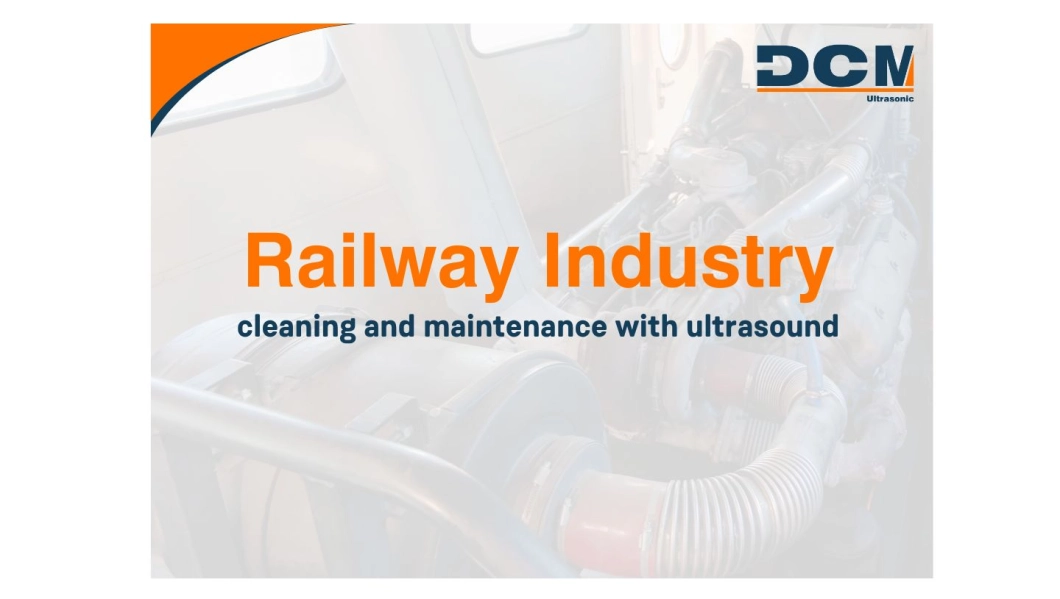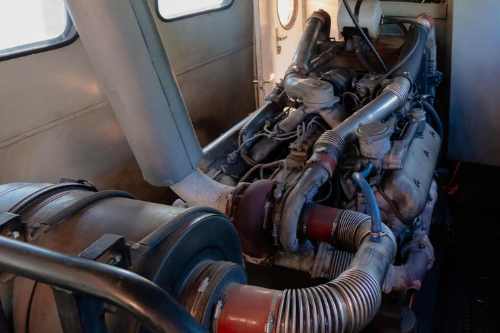
cleaning for the railway industry
The railway industry faces constant challenges in the maintenance and cleaning of its components. The accumulation of dirt, grease, oils and carbon residues on essential parts can affect the performance and safety of trains. In this context, ultrasonic cleaning technology has emerged as an innovative, efficient and sustainable solution to ensure the proper maintenance of railway parts.
Ultrasonic cleaning of railway components is presented as the most efficient solution for the maintenance of all types of parts. Our ultrasonic cleaning equipment is designed to withstand heavy loads, allowing effective cleaning of railway engines without inconvenience.
Cleaning for the railway industry with ultrasonic machines
What is ultrasonic cleaning and how does it work?
Ultrasonic cleaning is an advanced process that uses high-frequency sound waves generated by transducers to create microbubbles in a cleaning liquid. These bubbles implode with force, generating a cavitation effect that dislodges dirt adhering to the surfaces of the parts without damaging them. This process is particularly effective in removing contaminants from hard-to-reach areas and complex geometries.
Railway parts that can be cleaned with ultrasound
Ultrasonic cleaning machines are highly versatile and can be used to clean a wide variety of components in the railway industry, including:
-
Engines and mechanical components: Engine blocks, pistons, connecting rods and cylinder heads.
-
Brake systems: Brake discs, calipers and cylinders.
-
Hydraulic and pneumatic components: Valves, pumps, pipes and cylinders.
-
Wheels and bogies: Removal of friction residues and lubricants.
-
Transmission elements: Gears, shafts and couplings.
DISCOVER OUR INDUSTRIAL CLEANING MACHINES FOR THE RAIL INDUSTRY
Applications within the railway industry
The use of ultrasonic cleaning in the railway sector extends to various applications:
-
Preventive and corrective maintenance: Removal of waste without the need for complex disassembly.
-
Cleaning of parts before assembly: Ensures that components are free of contaminants before being assembled.
-
Restoration of used components: Extends the life of expensive parts through their effective recovery.
-
Cleaning of spare parts: Ensures that spare parts are in optimal condition before installation.
At DCM Ultrasonic, we develop ultrasonic cleaning machines designed to meet the demands of the railway sector. Our equipment guarantees deep, efficient and sustainable cleaning, optimizing maintenance processes and prolonging the life of components. If you are looking for an advanced cleaning solution for your railway fleet, contact us and discover how our technologies can improve your industrial operations.
TRAIN ENGINE CLEANING
Advantages and benefits of ultrasonic cleaning in the railway sector
- Superior efficiency: Removes contaminants quickly and uniformly.
- Accessibility to difficult areas: Penetrates complex geometries without damaging the part.
- Reduced use of chemicals: Lower environmental impact and less generation of toxic waste.
- Savings in operating costs: Reduced consumption of water, energy and cleaning products.
- Longer component life: Prevents premature wear of essential parts.
- Optimized safety: Ensures the correct operation of railway systems.
REQUEST MORE INFORMATION ABOUT OUR CLEANING SOLUTIONS FOR THE RAILWAY INDUSTRY
Common questions about ultrasonic cleaning in the railway industry
1. What are the most recommended frequencies for cleaning railway parts?
Frequencies between 25 kHz and 40 kHz are the most suitable for deep cleaning of metal and mechanical parts.
2. What type of cleaning liquids are used?
Aqueous solutions with specific biodegradable detergents are used to remove grease and residue without damaging the parts.
3. Can ultrasound damage sensitive components?
No, as long as the appropriate frequency and power parameters are used.
4. How long does an ultrasonic cleaning cycle last?
It depends on the type of contamination and material, but it usually ranges between 10 and 30 minutes.
5. Can railway electronic components be cleaned?
Yes, but they must be dried and properly protected after the process.
At DCM Ultrasonic we have machines specialised in cleaning railway components, rails, wheels and train engines. We specialise in ultrasound technology developed by us and patented for its application in a multitude of industries such as the automotive or naval industries, achieving maximum results in all of them. This is the result of years of work, research and development to offer our clients an efficient solution.

